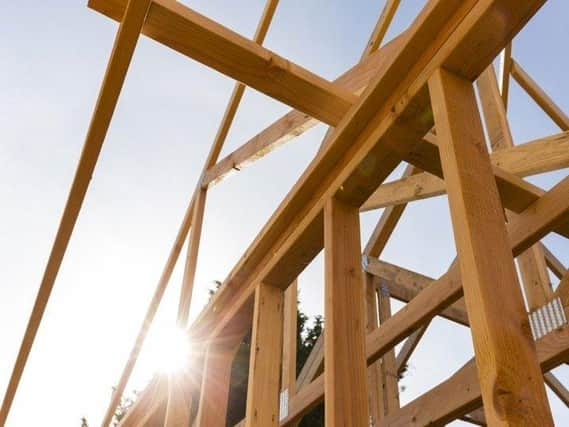Wood you believe timber has big role to play in cutting carbon emissions?


Last year, the UK Government set an ambitious target to reach net-zero emissions by 2050 whilst Scotland’s net-zero target is 2045. Recovery from lockdown presents a unique opportunity for us to “build back better” and return to a more sustainable way of life for future generations.
The construction, operation, and maintenance of buildings account for a hefty 45 per cent of total UK carbon emissions, so the construction industry has a responsibility to find ways to reduce and offset its carbon footprint. Forestry and wood-based industries can play a pivotal role in doing this.
Advertisement
Hide AdAdvertisement
Hide AdThat’s why the UK timber industry launched a new campaign this week, Wood CO2ts less, to showcase the key role timber can play in helping reduce CO2 in the atmosphere and contribute to slowing down climate change.


Using timber contributes to reducing CO2 in three simple ways;
• Trees capture harmful CO2 from our atmosphere and store it as carbon;
• Replanting and replenishing sustainably managed forests means they continue to capture CO2 and promote biodiversity;
• Substituting wood for more CO2 intensive materials means carbon is stored for at least the lifetime of the building, often longer when we use recovered wood for ‘second life’ products.
It isn’t feasible for all sectors of the economy to become carbon neutral by 2045/2050, but wood products present a major opportunity for the construction industry. Wood CO2ts less encourages legislators, planners, local authorities, developers, architects and contractors to consider using wood first to meet carbon targets.
This sentiment was echoed recently by the Committee on Climate Change. For the UK to reach net-zero by 2050, it must (among other measures) prioritise tree planting and rapidly scale up the amount of wood used in construction.
Scotland is already forging the path to sustainable construction with most new homes (around 85 per cent) constructed using wood. This is significantly more than England, where almost 80 per cent of new homes are built from brick and block. However, Scotland must continue investing in its timber and forestry industries to help not just Scotland but the wider UK reach net-zero targets.
Advertisement
Hide AdAdvertisement
Hide AdTo harness the power and potential of timber as a low-carbon solution, we must continue investing in research, training, and education. Positive examples are the Construction Scotland Innovation Centre and Edinburgh Napier University’s Centre for Offsite Construction and Innovative Structures. Napier’s work includes research to increase carbon storage potential of new wood-rich products to support improved building performance and efficiency.
The UK must invest further in education and training on how wood use can add environmental and financial value to the construction sector. Only by upskilling workers to use modern methods of construction, such as timber, and encouraging a shift in culture, will we see the carbon footprint of a building being considered as important as any other element of building design.
Scottish and UK government policy must reflect a conscious commitment to support the increased use of timber and assist in removing financial and cultural barriers. In February, France said all new state-financed public buildings must contain at least 50 per cent wood or other organic material. Canada has a ‘Green Construction through Wood’ programme to incentivise mass timber building. In Wales, a wood encouragement policy known as Home Grown Homes was established in 2017 to support the use of wood in construction.
Now Wood CO2ts less is ready to press home the positive message of wood’s low-carbon contribution to a green recovery.
With the world turned upside down by Covid-19, we must harness this opportunity to fast-track our path to net-zero. But it will take a bold push from policy-makers to champion forestry and an increased use of wood throughout our construction industry.
Sarah Virgo is campaign manager, Wood for Good, a joint venture between Confor and Swedish Wood, and the UK timber industry’s campaign to promote wood use in design and construction. Wood CO2ts less was developed by Wood for Good for the timber industry. It promotes the message that wood from sustainably-managed forests instead of other materials is a good way to reduce CO2 emissions. www.woodforgood.com/co2
Comments
Want to join the conversation? Please or to comment on this article.